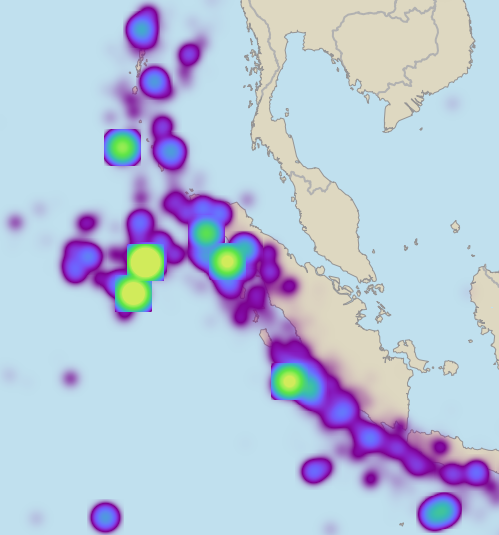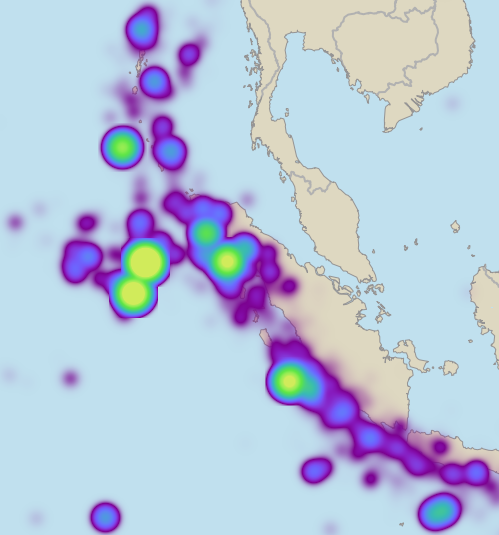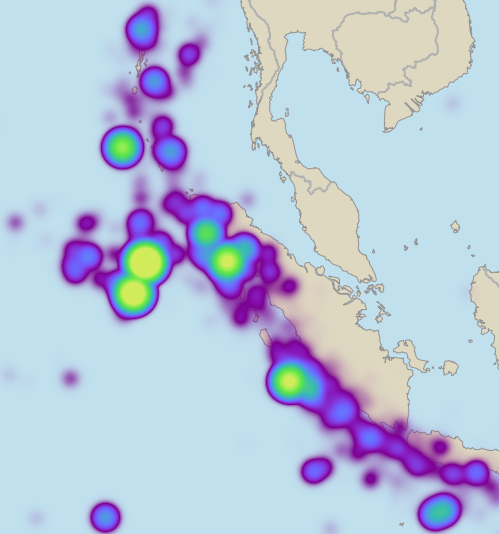DensityQuery.CroppingFactor Property
Gets or sets a factor that, when multiplied with the Blur, determines the cropping radius.
Syntax
public System.Double CroppingFactor { get; set; }Property Value
Default: 3.0
A dimensionless factor that, when multiplied with the Blur, determines the cropping radius.
Remarks
The product of the Blur distance and the dimensionless CroppingFactor determines a cropping radius. For each point, its smoothed density contributions are cropped by the smallest square that is aligned to raster cell boundaries and contains the circle with the cropping radius. For more details and a diagram, see Blur.
The default cropping factor of 3.0 is nearly always enough, but sometimes you can get smoother density results by increasing the cropping factor, at the cost of slower calculations. Here is an example where the default gives artefacts:
 |
We can see six hotspots where the cropping square is visible. In other words, the density smoothing did not extend far enough for a smooth appearance.
This map was generated from a database of earthquakes, and the DensityDataSet.FeatureWeight was not the magnitude but the released energy, which varies much more than the magnitude numbers. For the worst hotspots, the smoothed energy density at the cropping square boundary is very small compared to the center, but it is still not negligible compared to the neighboring areas.
To get rid of the artefacts, we can try to increase the cropping factor to 4, but some artefacts remain around the two worst hotspots:
 |
But increasing the cropping factor to 5 removes the remaining artefacts:
 |
The Blur was 6 pixels in all these screenshots.
Platforms
Windows, Linux, Android